Podcast: Play in new window | Download (Duration: 29:12 — 35.5MB)
Subscribe: Apple Podcasts | Spotify | Amazon Music | Android | Pandora | iHeartRadio | JioSaavn | Podcast Index | Email | TuneIn | RSS | More
By Davy Crockett
You can read, listen, or watch
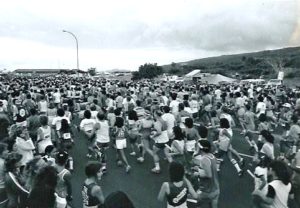 In the late 1970s, Hawaii had the most runners per-capita than any other state. Some called it the “running capital of the world.” Hawaii was also an early adopter of the 100-mile race and other ultras distances races. Similar to the Fort Mead 100 in Maryland (see episode 75), Hawaii’s first 100-milers grew out of ultra-distance relays and shorter ultras.
In the late 1970s, Hawaii had the most runners per-capita than any other state. Some called it the “running capital of the world.” Hawaii was also an early adopter of the 100-mile race and other ultras distances races. Similar to the Fort Mead 100 in Maryland (see episode 75), Hawaii’s first 100-milers grew out of ultra-distance relays and shorter ultras.
In 1976, “Primo Ultramarathon and Relays” began at Hawaii Kai on the eastern tip of Oahu, using a four-mile paved road loop. A solo 50-miler was included and by 1978 expanded into solo distances of 50K, 50-miles, 100K, and 100 miles. A massive 40-mile relay was also held each year with teams of ten runners.
Running on the islands exploded. This popularity did not happen by chance. It came about because of many key individuals who devoted much of their lives to make distance running races available to the general public in Hawaii. To have an appreciation of the first 100-milers established in Hawaii, one must learn about the rich running history that evolved there over the years.
Norman Tamanaha – The Father of Distance Running in Hawaii
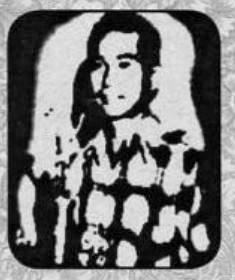

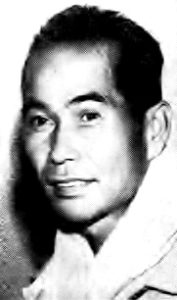

Roger Toguchi – AAU Races in Hawaii
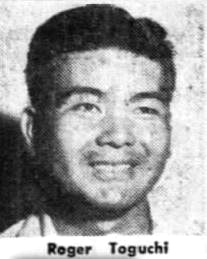



Johnny Faerber
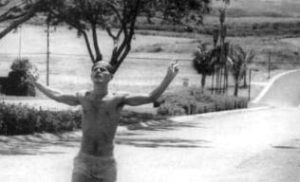

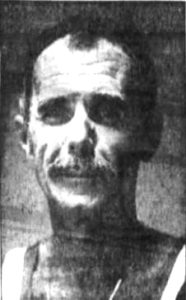

Kapiolani Park
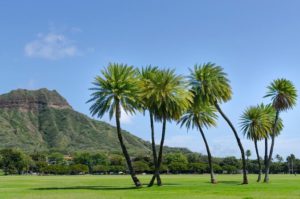

The Mid-Pacific Road Runners Club
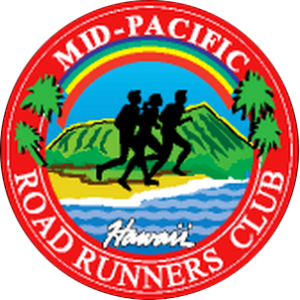

The 140-mile Oahu Perimeter Relay


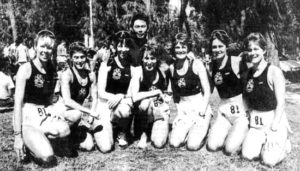

Birth of the Ironman
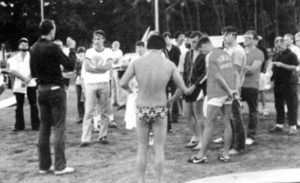

In 1976, with nearly 600 runners in the Perimeter relay, running teams left in four waves from 9 p.m. to 12 midnight. Afterwards, at the awards ceremony held at the Primo Brewery, an historic discussion occurred. After a few beers, several runners, including John Collins, Tom Knoll, and two guys who were primarily swimmers and bikers, talked the three grueling endurance events held in Hawaii. The idea of holding the first Ironman event was hatched.
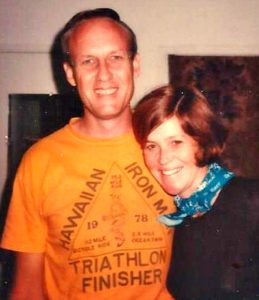

“John Collins commented that it would really be something if a person could do all three of the major endurance swimming, biking, and running events held in Hawaii in one day. He said that person would be truly an ironman. Everyone laughed as if he was nuts.” The Ironman became a reality in 1978, when the “Around the Island Triathlon” was founded by Collins.
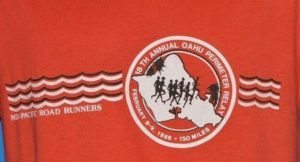

The Short Loop 40-mile Relay


Honolulu Marathon
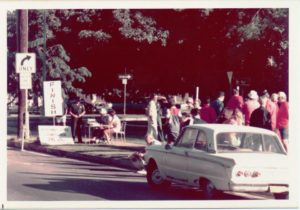

After the Hawaii Marathon moved to island of Maui, the Honolulu Marathon was established in 1973, founded by Mayor Frank Fasi (1920-2010), and organized by Dr. Jack H. Scaff (1935-) and the Mid-Pacific Road Runners Club. It was first called, “The Rim of the Pacific Run” and contributed to the running boom that exploded during the late 1970s in Hawaii. There were 167 entrants the first year. Scaff said, “We thought we were a big race. It took us all day to register them. After the race was over, the Mid-Pac Roadrunners said if we are going to be the “Boston of the Pacific” we need to train people. So, in 1974, we started the Honolulu Marathon Clinic with 4,000 runners.” For the next few years, the event doubled in size every year. By 1976 it had grown to more than 1,650 entrants and had more than 7,000 runners in 1978, with mostly local competitors.
The 1976 Primo 50-mile Fun Run and Relay
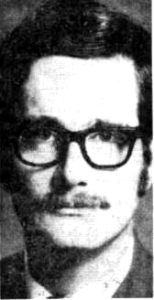



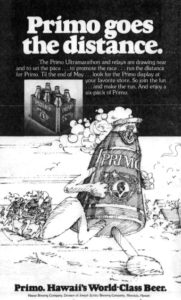

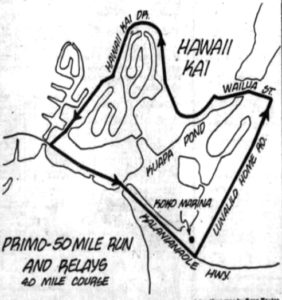

An exceptionally large group of 107 solo 50-miler runners started in staggered one-hour stages Saturday night according to their projected finishing time, and the relays started at 4 a.m. on Sunday. Every solo runner who completed at least 32 miles was given a certificate. Legendary runner, 67-year-old Walter Stack (1908-1995) from San Francisco flew over to run.
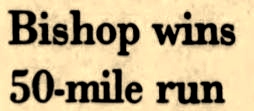

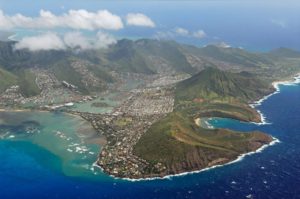

Seen and heard during the race: “Runners soaking their tootsies in the Rec Center pool before returning to the course. Friends shouting encouragement from the sidelines in sleeping bags. The Reverend Doug Olson blessing the run by reciting psalms of glories of running and then joining the jog himself. The runner’s cries heard through the night, ‘Lookin’ good! Lookin’ good!’ Just an average Saturday night for an Island on the run.”
The 1977 Primo Event
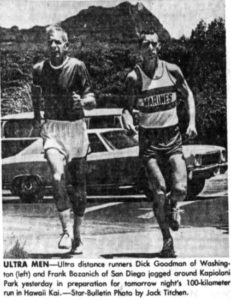

For 1977, 100 km and 50 km races were added to the event. Frank Bozanich (1944-) (see episode 72), a marine captain from San Diego, was the favorite in the 100 km. He was the current holder of the American 50-mile record set November 1976 in Central Park, New York. He was impressed by Hawaii’s running community. “Hawaii is so outdoor oriented. Everybody would rather be a participant than a spectator.” Dick Goodman (1920-2011), “The Ironman of Washington” also ran. He said, “People don’t realize the fantastic feeling you have after you run, how the food tastes, what a pleasure it is to have a drink. If I don’t run twenty miles a day, I don’t feel good.”
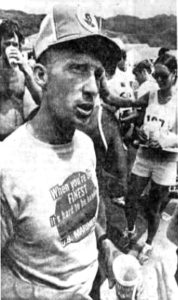

The races start on May 28, 1977. The locals were warned, “If you are driving around Hawaii Kai area tonight, those aren’t residents answering a tidal wave warning you will be seeing on the street.” There was a total of about 1,400 runners involved, including 100 ultrarunners in the solo events. The 100K started at 8 p.m., the 50-miler at 11 p.m., the 50K at 4 a.m., and the 40-mile relay at 5 a.m. It was proclaimed that Hawaii was the “running capitol of the world.”
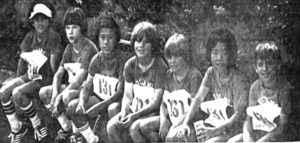

The event certainly captivated Honolulu. “While top guest and local runners competed in grueling individual events, a swarm of mostly everyday people massed along Hawaii Kai Drive for the spirited team relay event. With free-flowing beer and soft drinks, it seemed more like a street party.” A surprised police officer directing traffic commented, “We really didn’t expect anything like this.”
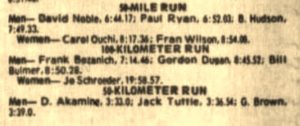

1978 Primo Ultramarathon and Relays – The first Hawaiian 100-miler
In 1978, the Primo Ultramarathon and Relays continued to grow with an expected 4,600 entrants which made it the largest participant sport event ever in the state. A 100-mile event was added with six entrants.
100-Miler Entrants
Max Telford
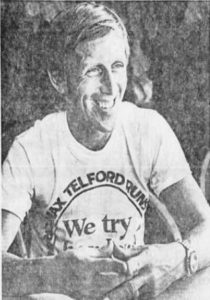

Telford was a legitimate elite ultrarunner who sought out amazing running adventures to be the first or the fastest. Instead of running in many competitive racse, he accomplished many successful solo stunts and self-promotions, working with sponsors who at times made “over the top” claims about his abilities.
In October 1976, Telford flew to Hawaii to run the Oahu perimeter relay course, solo. Avis sponsored him, and he ran around the island, 134 miles, in 21 hours. Telford claimed that he held twelve ultrarunning world records, but they were mostly fastest known times for stunts no one else had attempted.
In 1977, Telford ran 186 miles on Maui in 31:33:38 and set a world’s fastest known time for a road 300 km. As plans were put into place to add a 100-miler to the 1978 Primo event, it was highly publicized that Telford would be running in Hawaii’s first 100-miler.
Paul Ryan
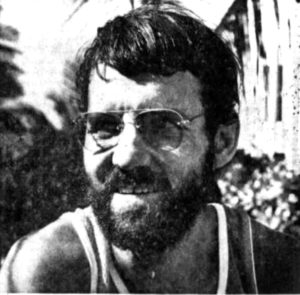

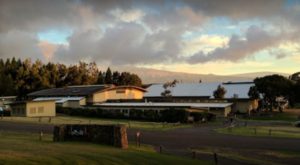

After college, he went to the big island of Hawaii in 1971, where he worked as a high school teacher and basketball coach at Hawaii Preparatory Academy. He said, “In the two years of coaching, we won only three games. The school was going to make me their volleyball coach as well. But they changed their mind when they learned that I never had played the game.”
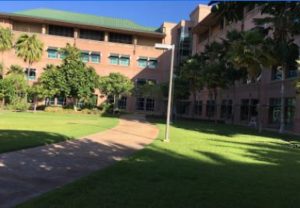

In 1974, he started to attend medical school at Hawaii School of Medicine on Oahu. He hoped to get a medical degree and practice in under-served areas of Hawaii. That year he also began competing in running races in the area from one mile to a marathon, placing high. He said, “After seeing so many patients with the diseases of civilization, heart attacks, strokes,
cancer, plus others, it made a believer out of me regarding the importance of maintaining good health.”


Ryan’s best marathon time was a respectable 2:52, but he soon learned that he did much better in the ultra-distances. In 1977 he placed second at the Primo 50-miler with 6:52:03. One person pointed out that “Paul Ryan looks more like a running back than a distance runner.” Ryan worked at improving his health and became a vegetarian. His “running back” weight went down and his running performance improved. He prepared for the 1978 100-mile race by running about 120-130 miles a week during the previous two months.
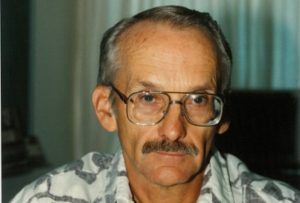

In 1975 he won a 50-miler in 6:50:40, and in 1977 he was the masters champion at the AAU 50-Mile Championship held in Santa Monica, California. His time was 6:54:15.
Of the 100-miler, Dugan said, “I’ve been training hard, and I’m ready for the long one. I ran almost 100 miles last week, and over the past year I’ve averaged 12 miles a day.” He was a veteran of 12 marathons and several ultras during the past five years, but this was his first 100-miler.
In later years, Dugan would go on and finish Western States 100 seven times, and finish the first 36 Honolulu Marathons, his last accomplished in a walking boot.
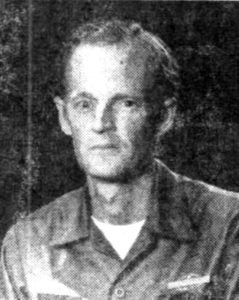

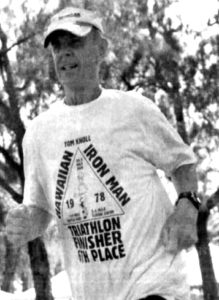

On February 18, 1978, at Honolulu, Knoll competed in the first Ironman Triathlon ever held, and finished sixth out of twelve finishers. Of that accomplishment he said, “No one had ever done anything like that and so it was more a question of finishing than it was placing. My trophy from the race says, “Finisher,” that’s all. That was the objective, just to see if it could be done. We had no traffic controls whatsoever. You had to find your own space to bike or ride. Nobody knew what the heck we were doing out there. Nobody wore helmets.”
Ernie Bennett was a Marine Sergeant. He had never even run a marathon race but had been doing eight-mile noon runs each day and had recently ran a successful non-stop 50-miler run. He said, “I guess I missed those ‘short’ marathons during my training. But I’m looking forward to finishing the 100-miler.” He increased his training to 120 miles per week leading up to the race.
In addition to the six runners in the 100-miler, there were ten in the 100 km, 23 in the 50-miler, and 57 in the 50 km. There were also 449 relay teams of 10 runner each.
The 1978 100 Miler
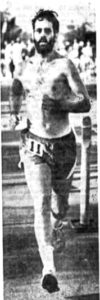

On race day, May 27, 1978, Boardman for some reason started early before the official start. Four others started at the official 4 p.m., start. Curiously, despite all the publicity in the news, Telford, failed to show up and gave no explanation. Did some legitimate competition scare him away?
Once the relay got started the next morning, “the roads were ruled by the masses of people. Traffic was squeezed down from four lanes to two and even the cars were forced to crawl, giving precedence to the human race. While most of the relay teams picnicked on the sidewalks, screaming, chanting and waving placards and banners, some serious running was going on in the ultramarathon division.”
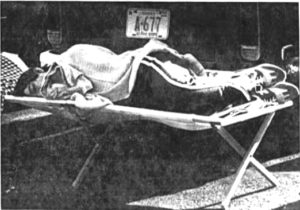

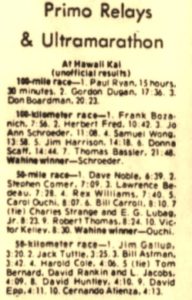

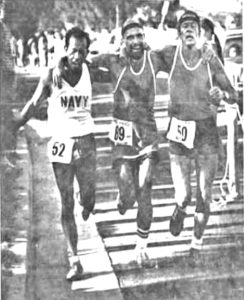

Ryan hung on and finished in 15:30:00 for first place, the 8th fastest 100-mile time in America that year. Soon after he stopped, his wits returned, and he started to think about his next long run. He said, “I was gonna take a victory lap but you don’t run something like this for fun but just to finish and I’m afraid if I sit down, I many never be able to stand up.”
Dugan finished in second with 17:36. Boardman was credited with a 20:23 finish. Knoll also finished in more than 20 hours
The 1979 100-Miler
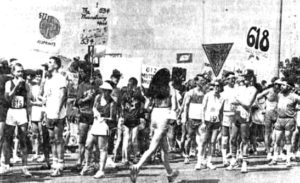

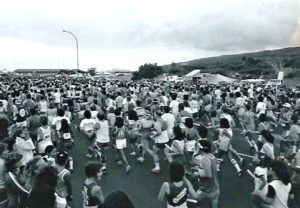

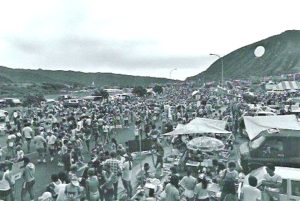

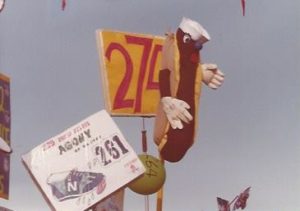

Telford also struggled. He said, “During the night the air became heavy and humid and I slowed a bit. It wasn’t like my lead was threatened since Paul Ryan, my nearest competitor was running nearly a full lap behind me.”
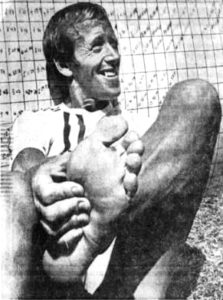

Telford went on to win in 13:53:44. Ryan came in second with 14:42:59, his lifetime 100-mile best. Some wondered why Ryan did not win again that year. He explained, “Actually I was well-satisfied with my performance. My time was 47 minutes faster than my winning time last year. The only difference that I can see was that Telford was entered in this year’s race.” Telford boasted, “I expected to do better. What is important is that I won the race.”
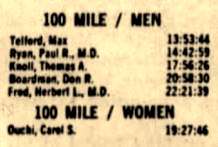

Four other runners also finished, Tom Knoll in 17:56:26, Carol Ouchi in 19:27:46, Don Boardman in 20:58:30, and Dr. Herbert Fred in 22:21:39. Ouchi, a legal secretary, set the state’s women’s records in both the 50-mile and 100-mile distances. She said, “I never really wanted to quit. But it was an awful long night of running. Don’t asked me today if I ever want to run it again. I might say no.”
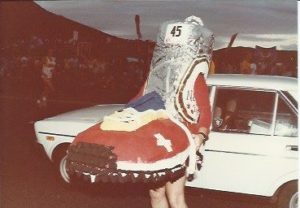

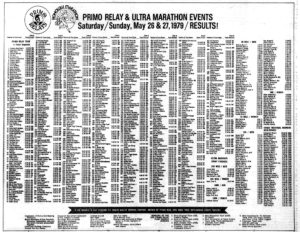

The 1980 100-miler
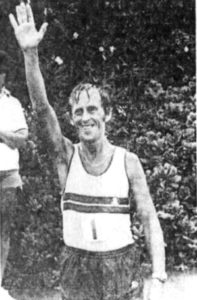



Ryan and Dugan battled hard against each other in the 100 km but then decided to run the last few laps together. They tied for the win.
The 1981 100-miler
![]()
![]()
Later years
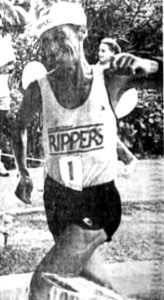

In 1983, it was Ryan’s turn again to win in 16:49:05 as Telford won the 100 km. By 1984, interest in the 100-miler and the other ultras started to dwindle and Telford DNFed the 100-miler. There were just two finishers with a woman runner, Noel Murchie (1936-) as the overall winner with 20:37:49. In 1985 the solo ultra events were discontinued. The event was only a 32-mile relay. The Hawaii Festival of Running was discontinued in 1986 because of difficulties obtaining liability insurance.
Later in the 1980s the Hawaiian Ultrarunning Team (H.U.R.T.) was established including runners who mostly ran on trails. The club became responsible for most of the ultras since the late 1980s. But no formal 100-mile race was held in Hawaii for 17 years. H.U.R.T 100 was established in 2001 with eight finishers.
What happened to Paul Ryan?
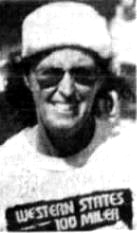

Ryan stayed active in the running community during the 1980s. In 1981, he co-authored a book with marathon runner Noel Murchie, Hawaii – A Runner’s Guide. He also contributed columns to the Ultrarunning Magazine. In 1981, Ryan and Murchie ran for nine days circling the island of Maui. In 1983 Ryan traveled to California and ran in Western States, finishing in 20:35. It was proclaimed in the news that he was the first runner from Hawaii to ever finish the famed race. However, that was not true. The first Hawaiian finisher was Jeff Nakama from Maui, who finished 1978 Western States in 26:39.
By 1987, Ryan dropped off the ultrarunning radar. Sadly, in 1993 he was disciplined in Hawaii for substance abuse and his medical license was suspended for a year. He also could no longer prescribe controlled substances. He likely moved away from Hawaii and may live in New York. In 2021, he was 75 years old.
What happened to Max Telford?
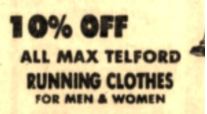

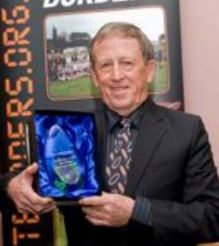

The parts of this 100-mile series:
- 54: Part 1 (1737-1875) Edward Payson Weston
- 55: Part 2 (1874-1878) Women Pedestrians
- 56: Part 3 (1879-1899) 100 Miles Craze
- 57: Part 4 (1900-1919) 100-Mile Records Fall
- 58: Part 5 (1902-1926) London to Brighton and Back
- 59: Part 6 (1927-1934) Arthur Newton
- 60: Part 7 (1930-1950) 100-Milers During the War
- 61: Part 8 (1950-1960) Wally Hayward and Ron Hopcroft
- 62: Part 9 (1961-1968) First Death Valley 100s
- 63: Part 10 (1968-1968) 1969 Walton-on-Thames 100
- 64: Part 11 (1970-1971) Women run 100-milers
- 65: Part 12 (1971-1973) Ron Bentley and Ted Corbitt
- 66: Part 13 (1974-1975) Gordy Ainsleigh
- 67: Part 14 (1975-1976) Cavin Woodward and Tom Osler
- 68: Part 15 (1975-1976) Andy West
- 69: Part 16 (1976-1977) Max Telford and Alan Jones
- 70: Part 17 (1973-1978) Badwater Roots
- 71: Part 18 (1977) Western States 100
- 72: Part 19 (1977) Don Ritchie World Record
- 73: Part 20 (1978-1979) The Unisphere 100
- 74: Part 21 (1978) Ed Dodd and Don Choi
- 75: Part 22 (1978) Fort Mead 100
- 76: Part 23 (1983) The 24-Hour Two-Man Relay
- 77: Part 24 (1978-1979) Alan Price – Ultrawalker
- 79: Part 25 (1978-1984) Early Hawaii 100-milers
- 81: Part 26 (1978) The 1978 Western States 100
- 87: Part 27 (1979) The Old Dominion 100
Sources:
- Hawaii Tribune-Herald (Hilo, Hawaii) Jan 4, 1971, Jun 1, 1983
- The Honolulu Advertiser (Hawaii) Aug 3, 1953, Oct 7, 1974, Feb 10, 1975, Jan 16, 28, Feb 16,17, Oct 5, 1976, May 28,30, Sep 13, 1977, Mar 8, 1979, May 26, 1980, May 25, 1981, Nov 4, 2005
- Honolulu Advertiser (Hawaii) Nov 5, 1969, Feb 4, 16, 1976, Jul 19, 1977, May 27,29, 1978, Oct 3, 1998, May 31, 1982, Aug 29, 2008
- Honolulu Star-Bulletin (Hawaii) Jan 1, 1937, Jun 30, 1961, Dec 20, 1962, Nov 7, 1969, Jan 16, 1970, Aug 28, 1971, Jan 22,28, Dec 3, 1974, Feb 7,9, 1975, Feb 16, 1976, Jan 17, May 18,27, Oct 25, 1977, May 7,9,25,27-28, 1978, Jan 11, May 28, Jun 3, 6, 1979, May 26, 28, 1980, Apr 2, 1986
- Runners of Hawaii
- J. Salmonsen, Ultrarunning Magazine, “Ultrarunning in Hawaii – Part I – A History,” Aug 15, 2013
- The Evolution of the Honolulu Marathon with Jack Scaff

